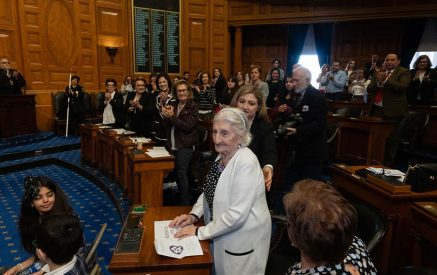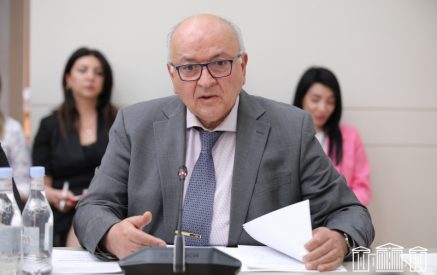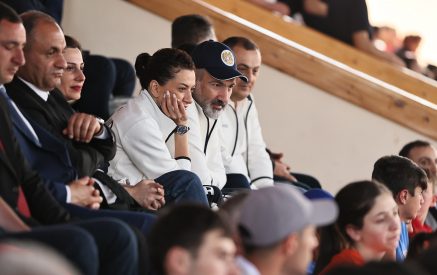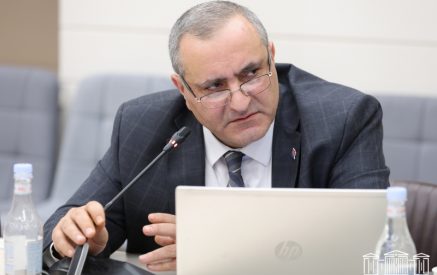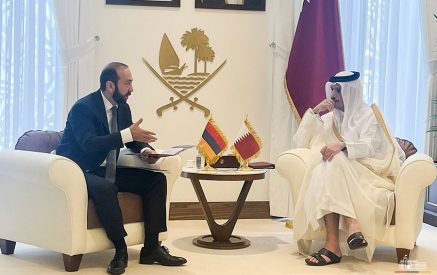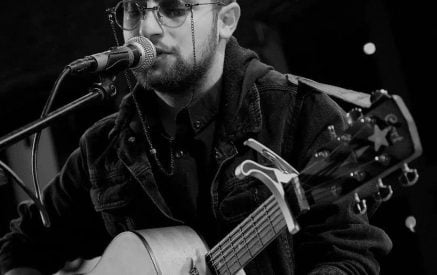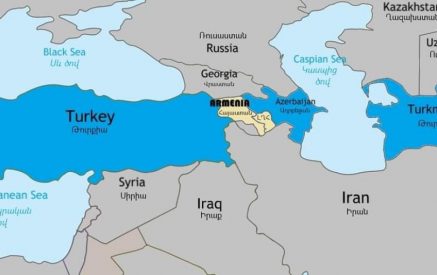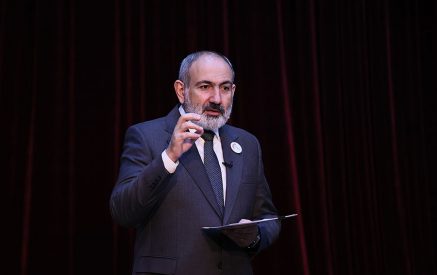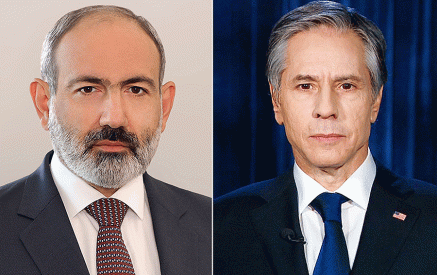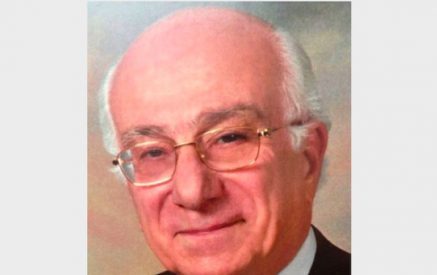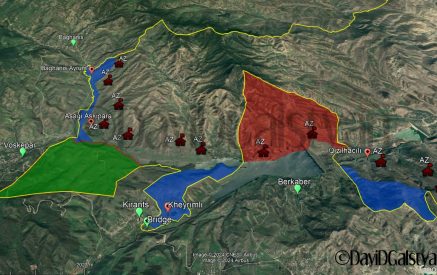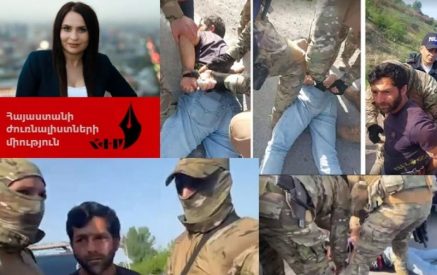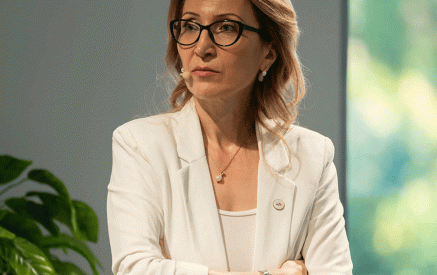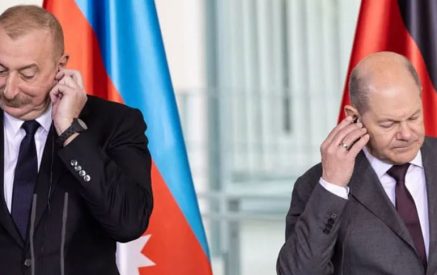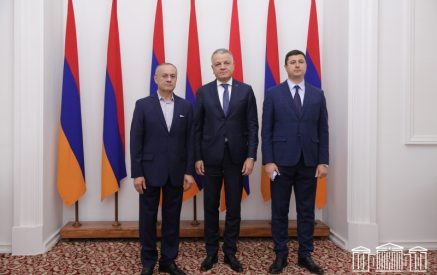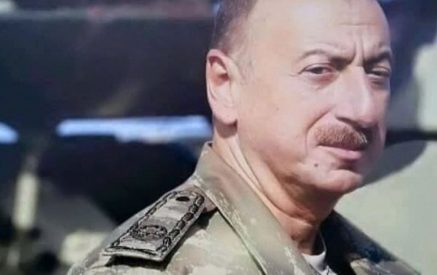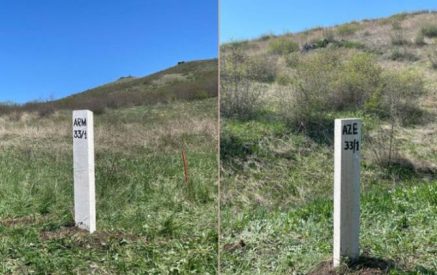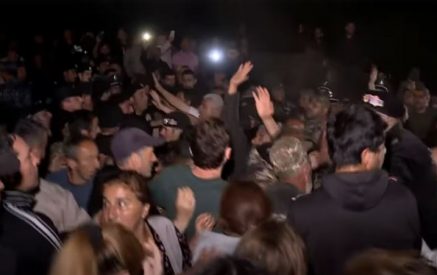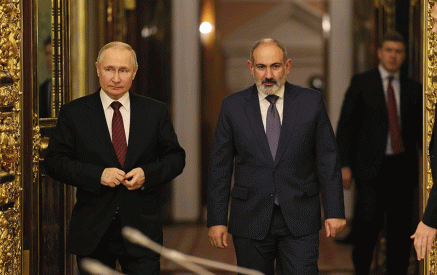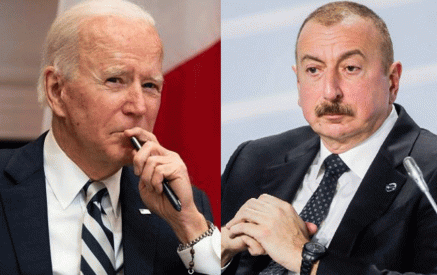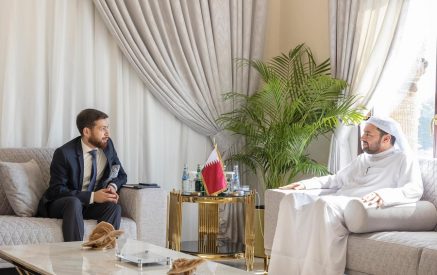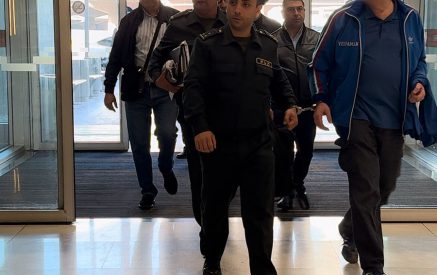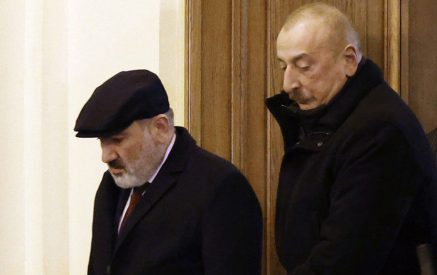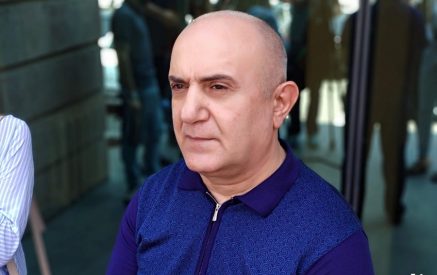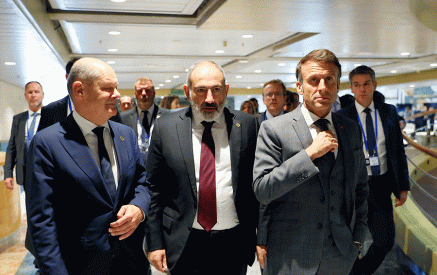A seminar, entitled “Non-kinetic warfare in the Nagorno Karabakh conflict” took place on Wednesday, March 19th, 2013 at The Institute of World Politics, Washington, D.C. through the initiative of the Political Developments Research Center (PDRC). The event, sponsored by the Kościuszko chair of Polish studies, had diplomats, academics, students, and international relations researchers in attendance, including the OSCE Minsk Group US Co-Chair Ambassador James Warlick.
PDRC Chairman Dr. Vahan Dilanyan and Vice-Chairman Vilen Khlgatyan delivered speeches at the event.
Prior to the lecture, research assistant to the Kościuszko Chair, Pawel Styrna provided a brief history of the Caucasus, from the Armenian kingdom of Ararat, to the battle for influence and control over Armenia between Rome/Byzantine Empire against Persia/Sasanian Empire. He concluded his remarks with the Bolshevik invasion of the Transcaucasus in the early 1920s.
At the first part of his speech Vahan Dilanyan noted that the recent escalations over the Crimean peninsula have once again directed our focus to the issues of frozen conflicts, nationalism and information warfare in the Eurasian territory. Referring to the dynamic risks associated with frozen conflicts, he highlighted the primacy of the factor of information in the analysis of conflicts.
According to him, non-kinetic warfare in the Nagorno Karabakh conflict is significantly different from the overall perception, since it has a combination of hatred propaganda, racism and murder promotion. Mentioning the extradited Azerbaijani murderer and Baku’s warlike rhetoric he noted that the aforementioned create an information atmosphere of Armenophobia.
Read also
“Thus, if the youth in Armenia and NKR determine their career path through having good education, then what are the youth in Azerbaijan to think if they see a murderer is given a hero’s welcome, a new title and the highest state support?”, he said, adding “similar racism was advocated in the Third Reich during the 1930s and 40s and we saw where that anti-Jewish propaganda led”.
Among other dimensions of the information policy of Azerbaijan, Dilanyan outlined the closed culture, pointing the recent US State Department report and the Aliyev regime’s mobilization of a war-prone society.
“Despite the transformation of information flows and the rising availability of the Internet and social networking sites, the primacy of the policy elite is recognizable in determining the internal and external channels of information flows since states are still governing those channels in their mandated territories”.
Another feature is the formation of a victim identity, thus attempting to develop a moral high ground for another war against Nagorno Karabakh. Noting the Khojaly events, a self-inflicted wound against its own population, he also mentioned the recent news of an Azerbaijani family asking Armenian authorities for a political asylum.
The aforementioned develops a concern that the irrational facets of the advocated hatred culture in Azerbaijan serve as a basis for the development of a pathological cruelty which is one of the roots of terrorism; he also noted potential development of grassroots jihadists; terrorists who don’t necessarily have direct contacts with terrorist organizations such as al-Qaida but share the ideology. Referring to Armenia’s effective participation in peacekeeping missions, Dilanyan mentioned the institutional memory of the birth of terrorists in Azerbaijan, which comes from the participation of Afghan mujahedeen on the side of Azerbaijan during the Karabakh War.
Dilanyan said that Azerbaijan’s policy threatens the overall stability and security in the region. Before and during conflict settlement meetings, Azerbaijani troops implement military diversions on the borderline; shoot innocent people living near the border regions, and through this, cynically violate the humanitarian principles, which are affirmed in the Geneva Conventions and the Helsinki Final Act principle of refraining from the use of force and threat of use of force.
He then announced that the international community and namely the OSCE have been reluctant to openly condemn such behavior and the Co-chairmen’s policy of false parity or pampering of Azerbaijan risking fragile stability. “Just as the same Afghan mujahedeen, supported by the U.S. during the Soviet war in Afghanistan, promoting their jihad against atheist communists, and then a decade later struck the US on 9/11, similarly the currently supported elements may become authors of new terror attacks”, he said.
At the first part of his speech PDRC Vice-Chairman Vilen Khlgatyan referred to the historical, political, legal and socio-cultural roots of the Karabakh conflict. In the context of the discussion on the essence and meaning of non-kinetic warfare, Khlgatyan outlined its information, political and psychological dimensions, which led to him present specific examples of appropriate policies implemented by the Armenian and Azerbaijani sides.
Talking about the “Safarov” profile of Azerbaijan, he noted the Aliyev’s regime’s spending of financial resources, in the context of which he mentioned the establishments of Aliyev statues in various cities, proposals of false resolutions of Khojaly events and huge financial policies being implemented in various think tanks and media platforms.
Regarding the Khojaly, among other arguments, he mentioned the stance of Azerbaijan’s first president Mutalibov, who maintains that Khojaly was a false flag operation aimed at removing him from power. The lecture attendees were fascinated when images were shown of dead civilians whom the Azerbaijani government claims are photos of victims from Khojaly, but in reality were photographs taken from Kosovo, Gaza, and Turkey.
Talking on the “one nation, two states” slogan, Khlgatyan noted that pan-Turkism strategy is still relevant, since Turkey and Azerbaijan maintain an embargo against Armenia and continue to hold hostile positions against Armenia and the Armenian Diaspora. Baku’s use of the Islamic factor was presented as well. For example to Western states, Baku claims it is a secular Muslim state, and tolerant of all peoples and faiths, but to the Islamic world, chiefly via the Organization of Islamic Cooperation, the Aliyev regime presents itself as a pious Muslim state engaged in a conflict against infidel Christian Armenians.
As a logical continuation of war-prone behavior, Khlgatyan outlined the unprecedented increase of the Azerbaijani military budget, which aims to bankrupt Armenia, and get official Yerevan to make concessions at the negotiation table. However, this policy has failed because it has only increased Armenia’s perception as a fortress under siege, and because Russia has helped Armenia maintain a balance of forces so as to keep the status quo intact in the South Caucasus.
Among the examples of non-kinetic warfare conducted by the Armenian side, Mr. Khlgatyan noted the usage of Armenian terms instead Turkish/Azerbaijani, and Soviet geographic place names; for example Artsakh instead of Karabakh. The associating of Azerbaijanis with Turks, the ultimate ‘other’ for Armenians in the national narrative, which can be seen in the portrayal of the victory of Karabakhi forces in the Karabakh War as halting a second genocide against Armenians. And finally the Talysh radio broadcasts from Karabakh that aim to present much needed cultural nourishment to the captive peoples of Azerbaijan, in this case the Talysh of southeastern Azerbaijan.
Political Developments Research Centre
Press release


